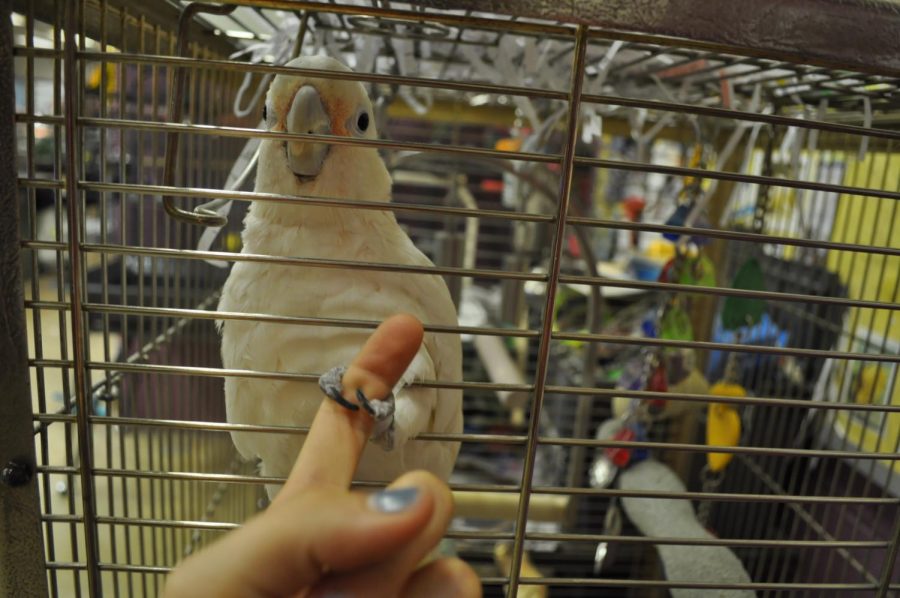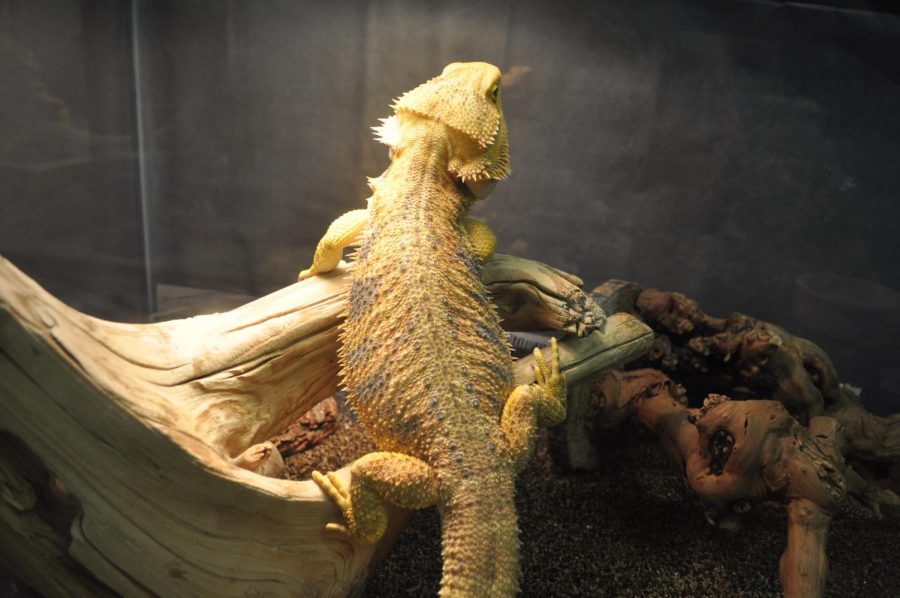Things get wild in Animal Sciences
As Arlington Public Schools (APS) changes and expands, more opportunities are coming. One of these opportunities comes in the form of a bird named KJ, who can say hello and goodbye, and even shake your hand. Animal Sciences, a course offered at the career center, gives students the opportunity to care for animals and learn about biology in a hands-on animal care environment. A class for future veterinarians, pet-sitters, biology lovers, and anyone who cares about animals, this class offers pet-sitting certification and the chance to interact with over 200 animals in the lab in an hour long class taken every day.
Students who love animals fill the class, looking to use this education towards a career in the veterinary field, or conservation. A big part of the class is learning about day to day animal care, but another portion is learning about the environment and what we can do to help animals in danger. Graduates who have taken the class have careers in all kinds of fields.
“We have former students who are all over the place, we do have vets, we do have vet techs, we have two right now currently at the national zoo as well as some in other zoos,” says animal sciences teacher Ms. Cindy Schall. “One of my former students does environmental education in Africa! You can do lots of things with what you learn here. We give you experience, it’s hands-on experience with lots of different animals so you can figure out what you like and what you don’t like.”
A day in Ms. Schall’s life includes being surrounded by around 250 animals (depending on who is giving birth or getting fed), and helping students care for them. Each student spends two weeks caring for an animal, or a group of animals. This week, junior Emma Miller has been caring for Kaytee, the chinchilla, and loves it.
“I really like the chinchilla. I love that [this class is] so hands on and we get to interact with all the different animals,” Miller said. “I love animals and I’m working towards a future career with animals, maybe a vet.”
Emma isn’t alone — almost all of the students are working towards a career with animals. Sophomore Isaac Mann says he doesn’t think a career without animals would be fulfilling.
“I know I’m going to be working with animals. If I’m not, I don’t think I’d be as happy in my work.” Mann said. “That’s just something I want to do, it’s something I’ve always wanted to do, I’ve always wanted to work with animals when I grow up and I have a real life job.”
Ms. Schall’s students get the privilege of spending an hour every day with their animals. According to the National Park Services, spending time with animals reduces stress and increase dopamine, a neurotransmitter responsible for motivation and joy in the brain. For this reason, taking Animal Sciences is often a huge source of stress relief and happiness for students. For sophomore Ally Obenberger, who has been caring for the degu, a small rodent native to Chile, animals are a source of calm.
“It’s special to get to interact with them. Some animals are more understanding than humans.” Obenberger said. “I would like to become a biologist. It comes from a love for animals. They’re cute and very interesting and I’ve always liked animals from a very young age.”
Aside from learning to care for any animal, from lizards to birds to bunnies to goats, students also learn about the value of animals in the environment. Ms. Schall says she makes sure to include conservation and ecology in lessons, which bodes well for students like Obenberger who hope to help with endangerment of all kinds of species.
“I think that animals are really important and a lot of people underestimate that,” Obenberger said. “It’s really not okay that we exploit their environments and are killing them.”









